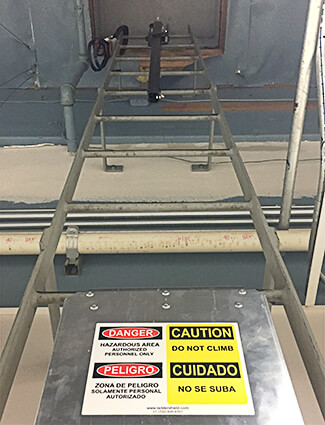Surge in Workplace Deaths Rally Calls for Safety
03
February,
2023
3 MINUTE READ

Workplaces are safer nowadays, right? Health and safety programs have improved fatality numbers in the 50 years since the Occupational Safety and Health Administration began. However, each year, there are still thousands of lives that end unnecessarily.
Over the past four years, workplace deaths have seen a trending uptick, with the latest numbers shocking the safety community. It's not that people, tasks, or workplaces are to blame, but that the numbers reflect how improvements can and should be made all around. What are some of the reasons for this increase and ways to improve?
Need for Improvements
According to the Bureau of Labor Statistics, before the coronavirus pandemic, one worker died every 99 minutes in 2019. There were 5,333 workplace fatalities, 2 percent more than in 2018 and the highest number of deaths in 12 years. Yet, with more awareness about the importance of safety, newer technologies on the rise, and more regulations to help workplaces stay in compliance, why the uptick and steady increase in deaths?
That's a question that deeply concerns the American Federation of Labor and Congress of Industrial Organizations (AFL-CIO). It attributes the increase to four years of rolled-back health and safety rules, enforcement complacency, and lack of custom education on specific causes of workplace deaths. "We look forward to working with the new administration to strengthen job safety protections and enforcement, rebuild workplace safety agencies, and prevent worker deaths, injuries, and disease," said AFL-CIO President Richard Trumka.
The labor union conglomerate's attention has always been focused on workers. In 1989, it began the observation of Worker's Memorial Day, April 28. The day serves as an annual reminder of those who died while on the job. The goal is to make stronger protections for the living. This year, it will implement resources to reduce workplace deaths, particularly combating the top causes, which are: traffic incidents, unintentional overdoses, construction extractions, and slips, trips, and falls.
"Fatalities should never be the cost of doing business," the National Safety Council said in response to the 2019 fatalities report. "Employers need a systematic approach to safety that includes having policies, training, and risk assessment techniques in place to address major causes of fatalities and injuries. Leadership needs to set the tone from the top and engage all workers in safety, identify hazards, and measure safety performance using leading indicators to continuously improve."
Set the Tone
A lack of leadership can influence poor workplace safety. Workplaces can support improved safety habits by implementing strong policies from the top down the line of command. Leaders should think about the business' reputation and place a focus on retaining their workforce. Typically, a business will face a citation and fine when safety violations cause an injury or fatality. In some cases, a business can be held criminally accountable if it knowingly fails to protect its workers. For example, a construction company in Washington was recently cited, fined, and faces criminal charges after a state investigation found a half-dozen safety violations that resulted in a worker's trenching death.

Employers are responsible for the health and safety management of their workplaces and workers. But taking the lead to improve safety doesn't have to be difficult. With the right direction, tools, and communication, a business can transform its efficiency overall. One of the first steps is to conduct a complete facility safety and job hazard analysis. Examine the facility's needs and consider emergency evacuations, chemical handling, barcodes and labels, and additional safety management. Once that data is ready, tackle each issue one by one for proper mitigation and compliance. It's helpful to get feedback from the workers who are performing the tasks. Ensure protective systems are in place to prevent worker injuries.
Just because analysis has been done, the responsibility to create a safe workplace does not end there. It takes a continuous commitment to re-evaluate and improve often. If necessary, utilize outside consultants, including OSHA's Volunteer Protection Program. Workplaces should also routinely conduct safety training and re-enforce safety best practices through up-to-date signs, labels, and floor marking. Over time, a high-quality safety program can save time, cut costs, reduce risk, and improve compliance.
RELATED RESOURCES

Improving Safety Programs | Why the Fuss?
Safety isn't the workplace enemy. There are many benefits that come from amplifying safety, and there are ...
Read
Workplace Communication to Protect Young Workers
OSHA is looking for ideas and partnerships to help lower the rates of accidents of young workers. Workplaces, ...
Read
Simple Tips for Safety as Manufacturing Powers On
Growth and demand in the manufacturing industry shows no sign of slowing down. This rapid demand also ...
Read.png)


